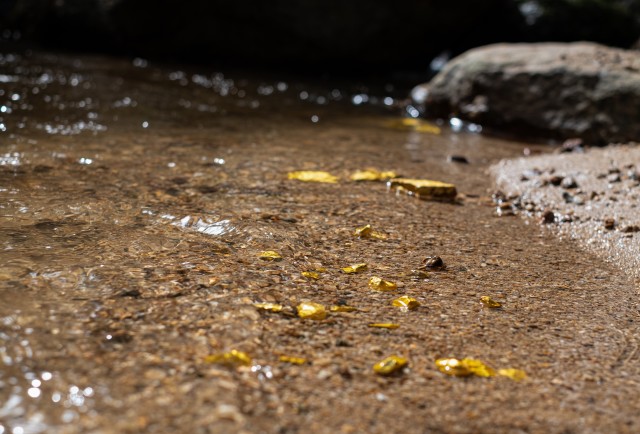Mercury, Fish, and Public Health Concerns: The Proposed Donlin Gold Mine
4:00 pm US Eastern Time
Slides & Resources
Resources
I oppose the proposed Donlin Gold Mine (2020) by Representative Tiffany Zulkosky, published in the Delta Discovery
Mercury Contamination in Women and Children from the Arctic to Cook Islands: IPEN Raises Alarm and Requires Action – A presentation by Pamela Miller to the IPEN Women’s Caucus on mercury (2020) – https://www.akaction.org/wp-content/uploads/Presentation-Women-and-Mercury-6-17-20.pptx
Alaska Leads the Nation in Toxic Releases for Good Reason: Large Mines Like Pebble are Toxic –by Bob Shavelson (2020) – https://inletkeeper.org/2020/02/19/alaska-leads-the-nation-in-toxic-releases-for-a-good-reason-large-mines-like-pebble-are-toxic/
Op-Ed on Donlin Gold Mine written by Gloria Simeon (one of our speakers) in 2018 – https://www.akaction.org/wp-content/uploads/Bethel-Threats-to-our-survival-as-a-People.pdf
Mercury in the North: Sources of Contamination and International Policies to Protect Health & Human Rights – 2016 CHE-Alaska teleconference – https://www.akaction.org/mercury-in-the-north-sources-of-contamination-and-international-policies-to-protect-health-human-rights/
Mercury Pollution in Alaska: Sources of Contamination, Health Effects, and Global Actions – 2011 CHE-Alaska teleconference – https://www.akaction.org/che-ak_february_23_2011/
Mercury in fishes in Alaska, with emphasis on subsistence species by Stephen Jewett & Larry Duffy (2007) – https://www.akaction.org/wp-content/uploads/Jewett-and-Duffy-Mercury-in-AK-Subsistence-Fish-STOTEN-2007.pdf
An NGO Introduction to Mercury Pollution – https://ipen.org/news/mercury-ngo-guide
CSP2 fact sheet on trace elements in mining waste – http://www.csp2.org/files/reports/Fact_Sheets–Trace_Elements_in_Mining_Waste.pdf
Donlin Gold Mine summary by Alaska Community Action on Toxics – https://www.akaction.org/wp-content/uploads/2016/04/DonlinGoldMinesummary.pdf
Donlin Gold Project summary by Ground Truth Trekking – http://www.groundtruthtrekking.org/Issues/MetalsMining/Donlin-Creek-gold-mine-prospect.html

Mercury is considered one of the top ten chemicals of major public health concern by the World Health Organization. Exposure to mercury, particularly methyl mercury, even at low levels, can cause irreparable harm to the developing brain and nervous system and is especially concerning for pregnant women and children. The top two sources of mercury contamination in the Arctic are atmospheric transport of mercury from coal combustion and from more localized releases of mercury from active and abandoned gold and mercury mines. Mercury released from these sites enters aquatic and marine environments, bioaccumulating up the food chain into larger fish, marine mammals, birds, and terrestrial animals including humans. In Southwest Alaska, a vibrant region rich in fish and marine and terrestrial life, the proposed Donlin Gold Mine has raised questions about the risk of mercury releases from the mine and health risks associated with increased methylmercury contamination in local foods.
Join us on May 26, 12:00 to 1:30 PM for a Lunch and Learn Webinar entitled Mercury, Fish, and Public Health Concerns: The Proposed Donlin Gold Mine. We'll be joined by a panel of speakers to discuss concerns associated with the proposed Donlin Gold Mine, potential releases of mercury from the mine, existing sources of mercury in the region, contamination and consumption of fish, and potential human health concerns.
Featured Speakers
Gloria Simeon of Bethel is an ONC tribal member and on the Board of Directors for the Yukon Kuskokwim Health Corporation. She has been heavily involved in the opposition of the Pebble and Donlin Gold Mine, leading many efforts to oppose and more thoroughly consider the consequences of mining in the YK Region, and was a delegate to the National Congress of American Indians in 2019.
Dr. Kendra Zamzow works for the Center for Science in Public Participation (CSP2). She has a Ph.D. in Environmental Chemistry from the University of Nevada, Reno and specializes in microbial interactions with trace metals, acid rock drainage and water quality. She assisted Chuathbaluk Traditional Council for several years during the development of the Donlin Environmental Impact Statement. She was also on the DEC working group to provide advice on updating water quality regulations to take into consideration the actual amounts of fish consumed by people in Alaska.
Dr. David Carpenter is director of the Institute for Health and the Environment at the University at Albany and Professor of Environmental Health Sciences at UAlbany’s School of Public Health. He specializes in the human health effects of environmental contaminants, including metals and organic compounds.
This call will be hosted by the CHE-Alaska Partnership, which is coordinated by Alaska Community Action on Toxics (ACAT). It will last for 60 minutes and will be recorded for the call and webinar archive.


